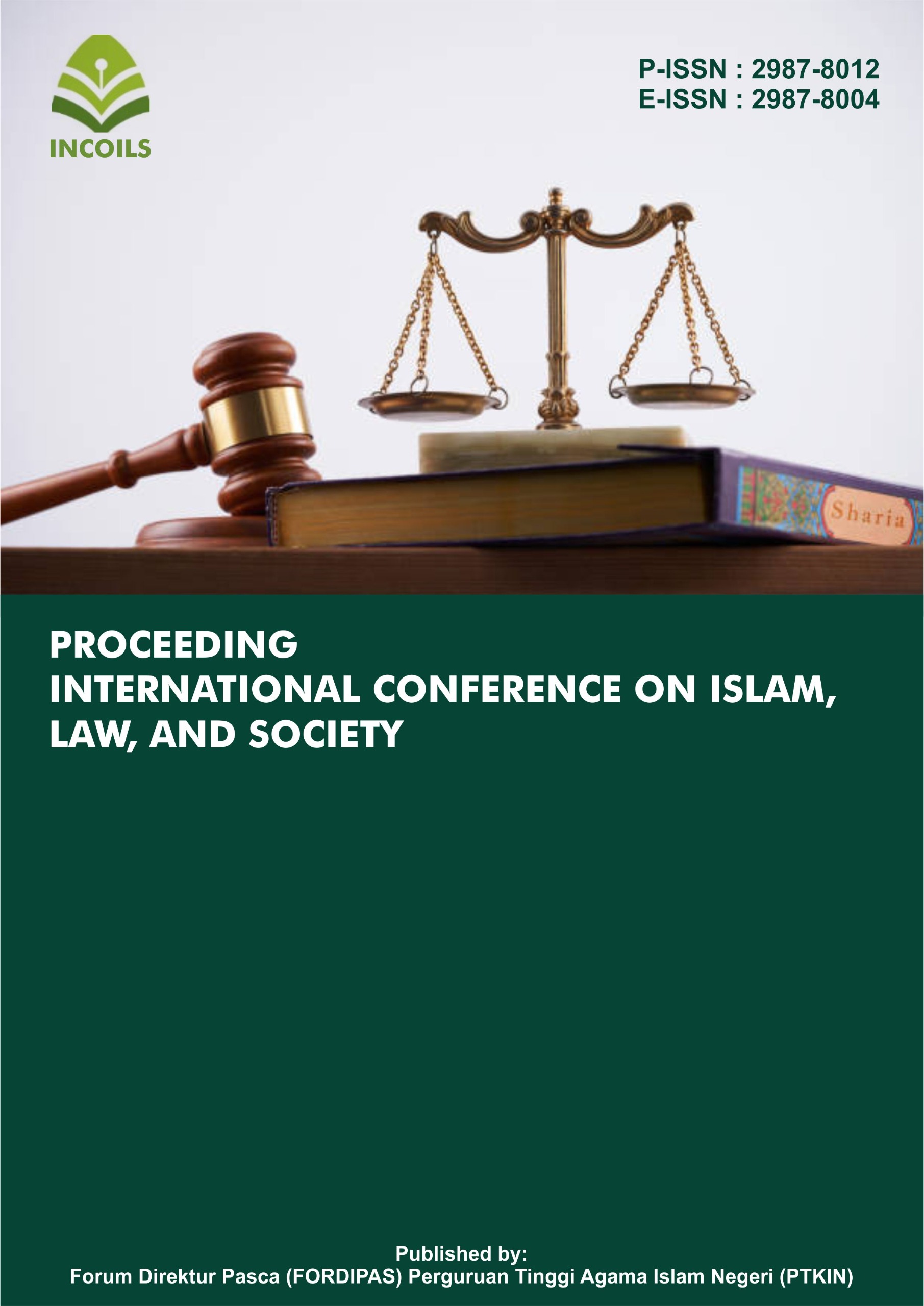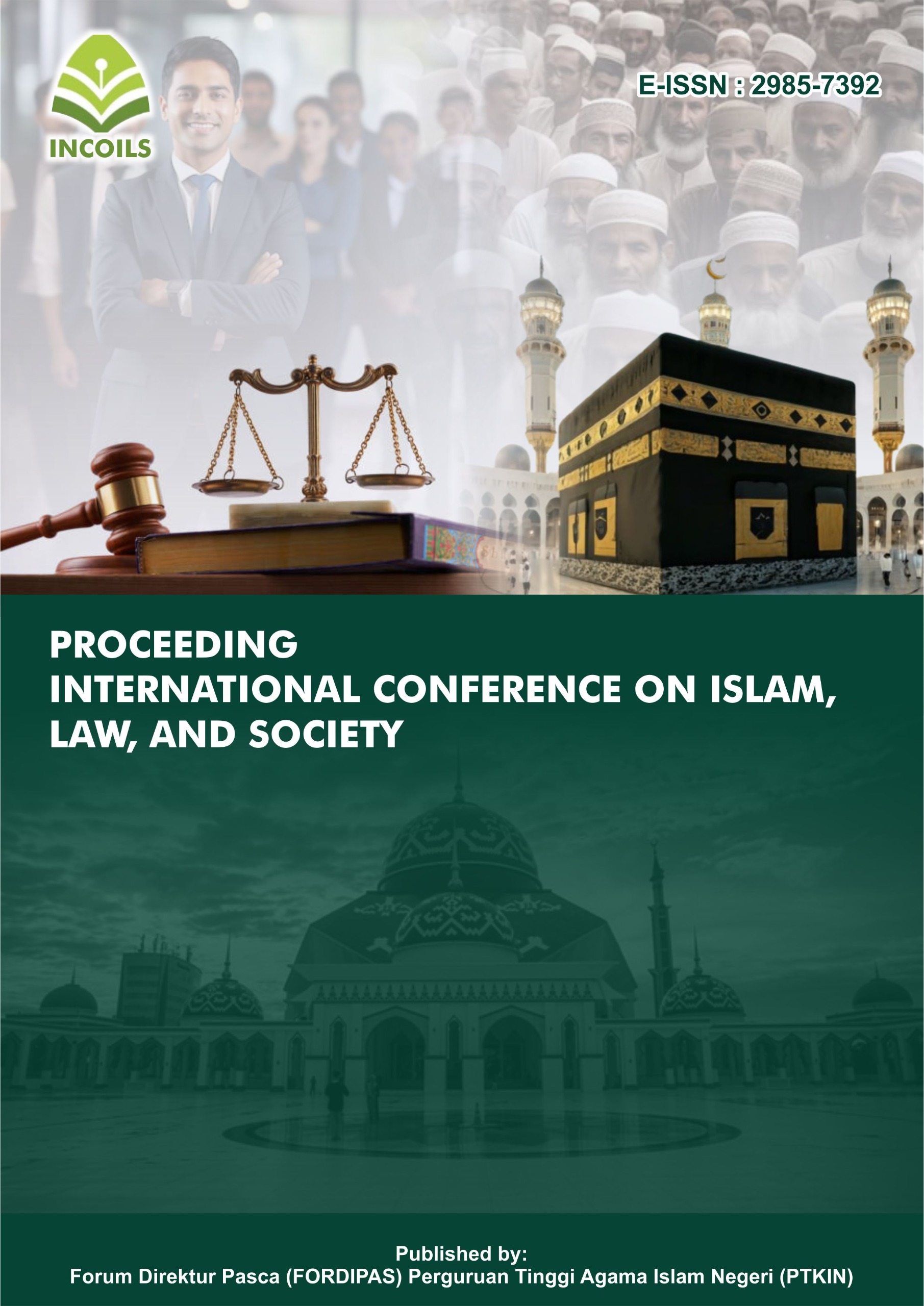Formulation of the Humanistic Approach in Arabic Language Learning to Develop Students Speaking Skills
DOI:
https://doi.org/10.70062/incoils.v4i1.267Keywords:
Formulation, Humanistic Approach, Arabic Language Learning, Speaking SkillsAbstract
Speaking skills in Arabic language learning often pose a challenge for students due to teaching approaches that do not emphasize personal aspects and individual needs. This article aims to formulate a humanistic approach in Arabic language learning as an effort to hone students' speaking skills. This research uses a qualitative-descriptive method with a literature review approach and analysis of classroom teaching practicesat Aqobah International School Jombang. Data was collected through literature studies, observations, and interviews with Arabic language teachers. The results show that the humanistic approach, which emphasizes individual empowerment, experiential learning, and the strengthening of emotional connections between teachers and students, can enhance students' learning motivation and their courage to communicate in Arabic. The formulation of this approach involves teaching techniques that support an inclusive environment, such as group discussions, simulations, and interactive dialogues. Thus, the implementation of the humanistic approach has been proven effective in overcoming communication barriers and significantly improving students' speaking skills.References
Abidin, Zaenal, Ahmed Mahfooz, Fauziah Sulaiman, and Hairul Fauzi. “Humanistic Approach in Islamic Education: Building Emotional and Spiritual Intelligence in the Digital Age.” Zabags International Journal of Islamic Studies 1, no. 1 (May 1, 2024): 29–35. https://doi.org/10.61233/zijis.v1i1.5.
Adila, Venia Nuzulul. “Konsep Pembelajaran Bahasa Arab Berbasis Pendekatan Humanistik Perspektif Paulo Freire.” Shaut al Arabiyyah 10, no. 1 (June 13, 2022): 69–76. https://doi.org/10.24252/saa.v10i1.25437.
Anis Shofiyatun N.. Interview. Interview by Imro’atus, November 01, 2024
Ernawati, Euis. “Penerapan Model Pembelajaran Kooperatif Tipe Group Investigation Dalam Pembelajaran Bahasa Arab Di Program Studi Pendidikan Agama Islam (PAI) STAI Syekh Manshur Pandeglang.” Attractive : Innovative Education Journal 6, no. 2 (2024). https://www.attractivejournal.com/index.php/aj/.
Fatimah, Titin, Didin Faqihuddin, and Fajri Ardiansyah. “KAJIAN TEORITIS PENDEKATAN HUMANISTIK (AL-MADKHAL AL-INSAN) DALAM PEMBELAJARAN BAHASA
ARAB,” n.d. http://file.upi.edu.
Hendri, Muspika. “Pembelajaran Keterampilan Berbicara Bahasa Arab.” POTENSIA: Jurnal Kependidikan Islam. Vol. 3, 2017.
Hijriyah, Athiyah Laila, Annindita Hartono Putri, Sovinaz Sovinaz, and Rohmatun Lukluk Isnaini. “Pendekatan Humanistik Dalam Pembelajaran Bahasa Arab Perspektif K.H. Ahmad Dahlan.” Tarbiyatuna: Jurnal Pendidikan Ilmiah 9, no. 1 (June 30, 2024): 115–30. https://doi.org/10.55187/tarjpi.v9i1.5628.
Kuswoyo Sekolah et al., “KONSEP DASAR PEMBELAJARAN MAHĀRAH AL-KALAM,”
Jurnal An Nuha, Vol. 4, No. 1, 2017
Muryanti, Elise. “E-Tech Bercerita Sebagai Pendekatan Humanistik Dalam Stimulasi Bahasa Anak,” n.d. https://doi.org/10.1007/XXXXXX-XX-0000-00.
Nabil. Interview. Interview by Imro’atus, November 05, 2024
Qays al Harrani. Interview. Interview by Imro’atus, November 05, 2024
Sekolah, Kuswoyo, Tinggi Agama, Islam Nahdlatul, Ulama ( Stainu, and ) Madiun. “KONSEP DASAR PEMBELAJARAN MAHĀRAH AL-KALAM,” July 2017.
Thontowi, and Sutipyo Ru’iya. “Implementasi Metode Contextual Teaching and Learning (CTL) Pada Pembelajaran Bahasa Arab Di Madrasah Tsanawiyah.” SALIHA: Jurnal Pendidikan & Agama Islam 6, no. 2 (July 31, 2023): 370–85. https://doi.org/10.54396/saliha.v6i2.658.
Wahyuningsih, Erni, Syindi Oktaviani Tolinggi, and R. Umi Baroroh. “Pendekatan Humanistik Melalui Permainan Edukatif Bahasa Dalam Pembelajaran Bahasa Arab Di Sekolah Islam Terpadu.” Maharaat: Jurnal Pendidikan Bahasa Arab 4, no. 1 (November 17, 2021): 17–43. https://doi.org/10.18196/mht.v4i1.12437.
Yusuf, Muhammad. “Kajian Teoritik Pengembangan Pembelajaran Bahasa Arab Berbasis Humanistik Di Madrasah Ibtida’iyah.” Shaut al Arabiyyah 7, no. 2 (December 6, 2019): 132. https://doi.org/10.24252/saa.v7i2.10752.
Downloads
Published
How to Cite
Issue
Section
License

This work is licensed under a Creative Commons Attribution-ShareAlike 4.0 International License.







